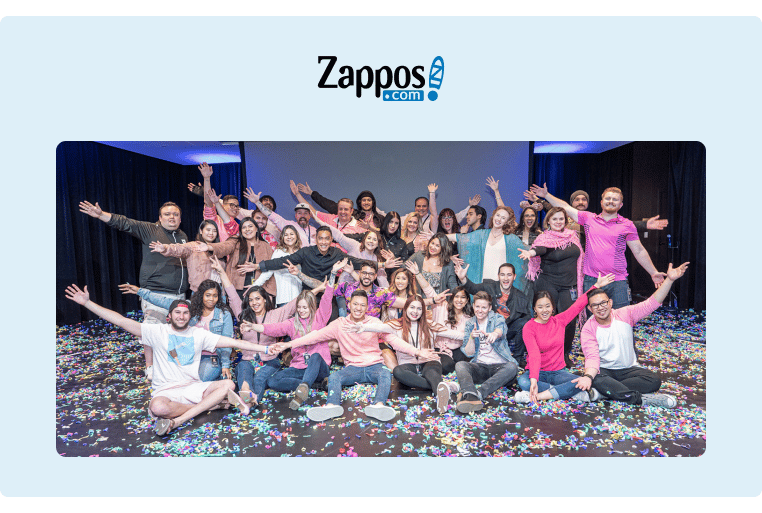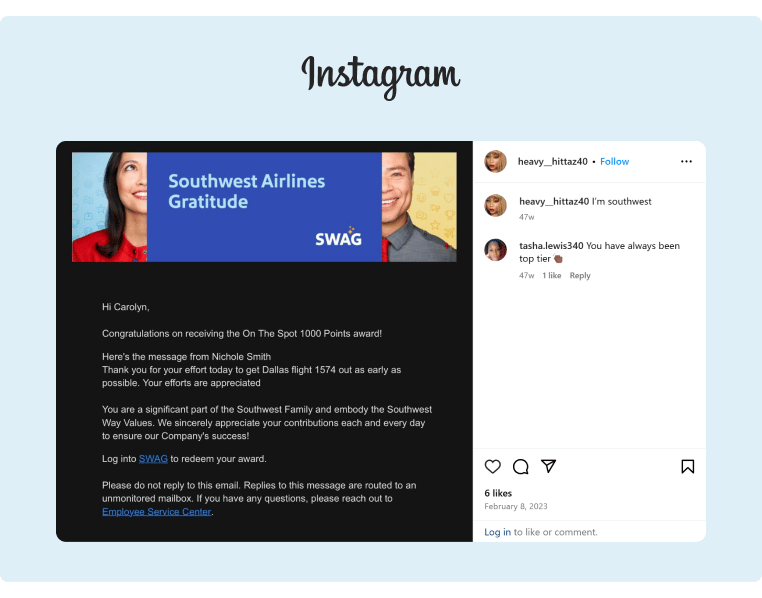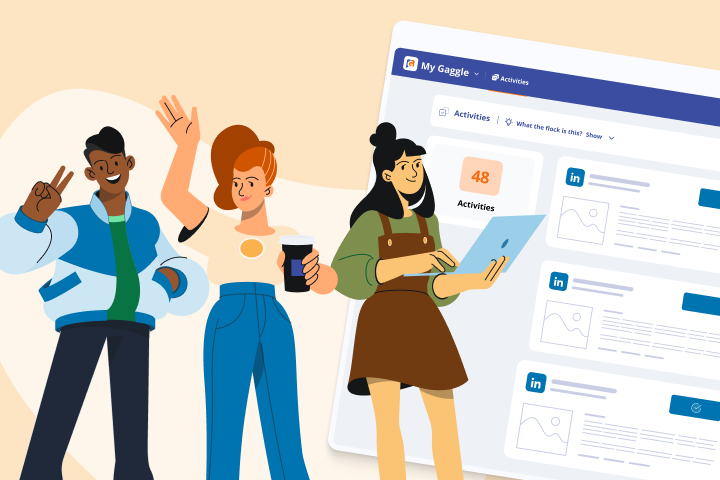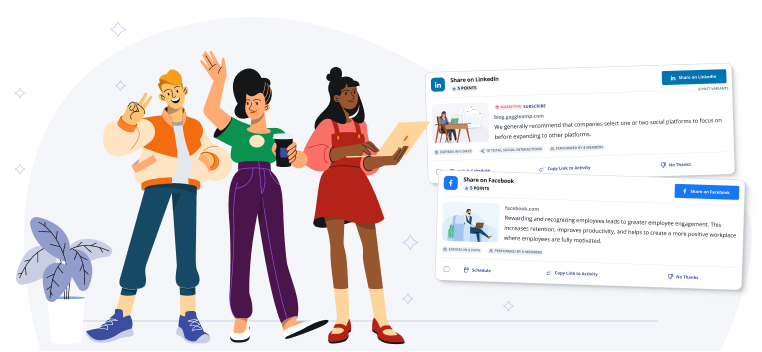Boost Your Employee Engagement With Internal Marketing
“Why is internal marketing important in business?” If you’re a marketer, how many times have you heard that question? Probably one too many.
Unfortunately, internal marketing tends to take a backseat to external marketing simply because upper management wants quick results (e.g., ROI). This needs to change: internal marketing needs to be a priority, too.
Here’s why: Internal marketing is the secret sauce to increasing your employee engagement.
By marketing to your employees why your company is a great place to work, you’ll be achieving the objectives of internal marketing — to keep employees engaged, motivated, and productive in their roles. As a result, you’ll not only retain your current employees, but attract new ones, and, due to the increase in productivity, boost your revenue.
We’re here to help you make internal marketing a priority at your business. In this article, we’ll discuss the importance of an internal marketing strategy, the benefits of internal marketing, and some internal marketing tactics.
Let’s get started.
Internal Marketing Strategy
An internal marketing strategy can help you maximize your employee engagement efforts. To craft an effective strategy, let’s first take a look at the key components of a solid internal marketing strategy. Then, we’ll review the types of internal marketing strategies.
3 Components of Internal Marketing
An effective internal marketing strategy has three main components:
-
Specific Goals. Decide what goals you want to achieve. Perhaps, it’s to reduce employee turnover, boost sales, and increase customer satisfaction.
-
Target Audience. Segment your target audience by being specific about who will receive your internal marketing communications. Depending on the purpose of the message, this could be by teams, departments, or specific employees. For example, messaging that aims to boost sales would go to the sales team.
-
Communication Channels. Choose how you want to distribute your messaging. Depending on the type of message (and segmented audience), you may opt for email newsletters, Slack, Zoom, or face-to-face meetings. Don’t forget to choose the frequency of your messaging (e.g., weekly, monthly, quarterly).
These three components are the foundation of your internal marketing strategy. Once you decide on your specific goals, target audience, and communication channels, then you can focus on the types of internal marketing that make sense for your company.
Examples of Internal Marketing
The goal of internal marketing is to get your employees onboard with your company’s mission, values, and goals. As your employee engagement increases, in turn, your employees will share with others why your company’s work environment and products/services are so great. This transforms your employees into brand ambassadors.
So, how do you get your employees invested and aligned with your company’s employer branding?
Here are a few examples of internal marketing strategies to get you started (or to refine your existing internal marketing):
- Onboarding Process. Begin your internal marketing efforts during the onboarding process. This is a great time to teach new employees about your company’s mission, values, how your product/service works, social media policy, etc.
- Consistent Communication. Provide clear, open communication so your employees feel valued and in the loop. To keep the lines of communication open, be consistent with individual check-ins, team meetings, and internal company-wide emails (e.g., newsletters that highlight company news and events).
- Employee Surveys. Give your employees a platform where they can feel comfortable to provide honest feedback. You can use surveys to see how employees perceive your company as well as its products and mission. If there is a disconnect, you can take that feedback and modify your internal marketing strategy.
- Training and Resources. Offer training that educates your employees on the products and services that your company offers, especially when a new product feature or service is launched. When employees have the training and resources to do their jobs, they feel more confident in their roles and have better job satisfaction. This also translates into better customer service, too.
Before you start developing your internal marketing strategy, it’s important to be aware of both the benefits and drawbacks of internal marketing. (Don’t worry, the benefits outweigh the drawbacks.) Let’s take a look at the drawbacks first.
Drawbacks of Internal Marketing
Before we jump into the benefits of internal marketing, it’s important to touch on a couple of drawbacks that many companies can face when trying to launch an internal marketing strategy.
For some companies, the prospect of taking on another form of marketing just isn’t realistic. They are simply stretched too thin to take on another marketing initiative. As a result, internal marketing is often handed off to communications, human resources, or marketing teams.
Unfortunately, adding another person to the team to handle internal marketing campaigns isn’t always ideal either. The costs to add another person (salary, vacation, benefits) to the company’s payroll can quickly add up. For departments with a strict budget, there may be no wiggle room to add another person.
However, these drawbacks shouldn’t deter you from making internal marketing a priority at your company. Fortunately, the benefits of internal marketing outweigh the costs. In fact, with an effective internal marketing strategy, over time, companies can increase their revenue!
Let’s take a look at the benefits of internal marketing.
Benefits of Internal Marketing
Internal marketing provides companies with key advantages including improved employee engagement and increased productivity. These benefits illustrate the importance of internal marketing.
For example, when you improve internal communication, your employees feel valued and heard, which increases their sense of belonging and investment in their roles. As a result, your employees’ productivity increases, which contributes to achieving company goals, and ultimately, higher revenue.
Here are a few more benefits of internal marketing:
- Improved Employee Retention.
- Stronger Company Culture.
- Better Customer Service.
- More Innovation and Creativity.
- Attracting Top Talent.
- Positive Brand Reputation.
To reap the rewards of internal marketing, you want to make sure your employee engagement is maximized. Leveraging employee advocacy is a great way to improve employee engagement. However, keeping employees engaged isn’t easy. Using an internal marketing tool can help. While there are many internal marketing tools out on the market, an employee advocacy tool like GaggleAMP is the most effective.
GaggleAMP’s platform helps streamline the employee advocacy process and encourages friendly competition via gamification to boost engagement.
Managers can use the platform to assign employee-specific engagement activities, so employees know exactly what to say (thanks to GaggleAMP’s AI-powered paraphrasing technology), or which content to engage with. The leaderboard also ranks employees by engagement to encourage more participation.
Using an employee advocacy platform is just one internal marketing tactic. Let’s take a look at a few others that can help you maximize your internal marketing efforts.
Internal Marketing Tactics
Maximizing your internal marketing efforts will take your employee engagement efforts to the next level. Here are three internal marketing examples to inspire you.
1. HubSpot
If you’re looking for solid internal marketing ideas to strengthen your lines of communication, HubSpot is a great source of inspiration. The company utilizes a variety of tools, which includes Zoom, Slack, and Google Drive to keep its employees in the loop and facilitate communication.
Also, check out HubSpot’s Instagram which showcases its humorous play hard, work hard culture. By having its employees make and share content on its IG social platform, it gives potential candidates a sneak peek into what working at HubSpot would be like, while also making current employees feel a part of the team.

Source: HubSpot
2. Zappos
Like HubSpot, online shoe and clothing retailer Zappos is all about strong communication and collaboration. The company’s weekly All Hands meeting helps its employees regularly communicate and give feedback.
Zappos also enables its employees to become Zappos Ambassadors through its program Zappos Insider. Here, potential Zappos candidates have the opportunity to chat with Zappos Ambassadors (and pick their brains) when applying for open positions. This also gives prospective employees a competitive edge by giving them a proverbial foot in the door.

Source: Zappos
3. Southwest Airlines
Southwest Airlines encourages its employees through a recognition program called Southwest Airlines Gratitude (SWAG). Using the SWAG platform, employees can send a quick note of gratitude called “Kick Tails,” or nominate a peer for an award that comes with SWAG Points. Using their SWAG Points, employees can shop for merchandise, gift cards, experiences, or redeem them for Rapid Rewards points.
SWAG is not only a great program for rewarding employees, but it encourages a supportive work culture.

Source: Southwest Airlines
These are just a few internal marketing examples to help get you started. Don’t hesitate to create your own unique employee engagement program, drawing elements from these three big brands.
Final Thoughts
Now that you have the tools to craft a strong internal marketing strategy to boost your employee engagement, it’s time to make it a priority. To give your internal marketing an even bigger boost, consider also using an employee engagement solution that not only streamlines employee advocacy but also improves workplace culture. Schedule your demo today to see how GaggleAMP can help you achieve those goals.








